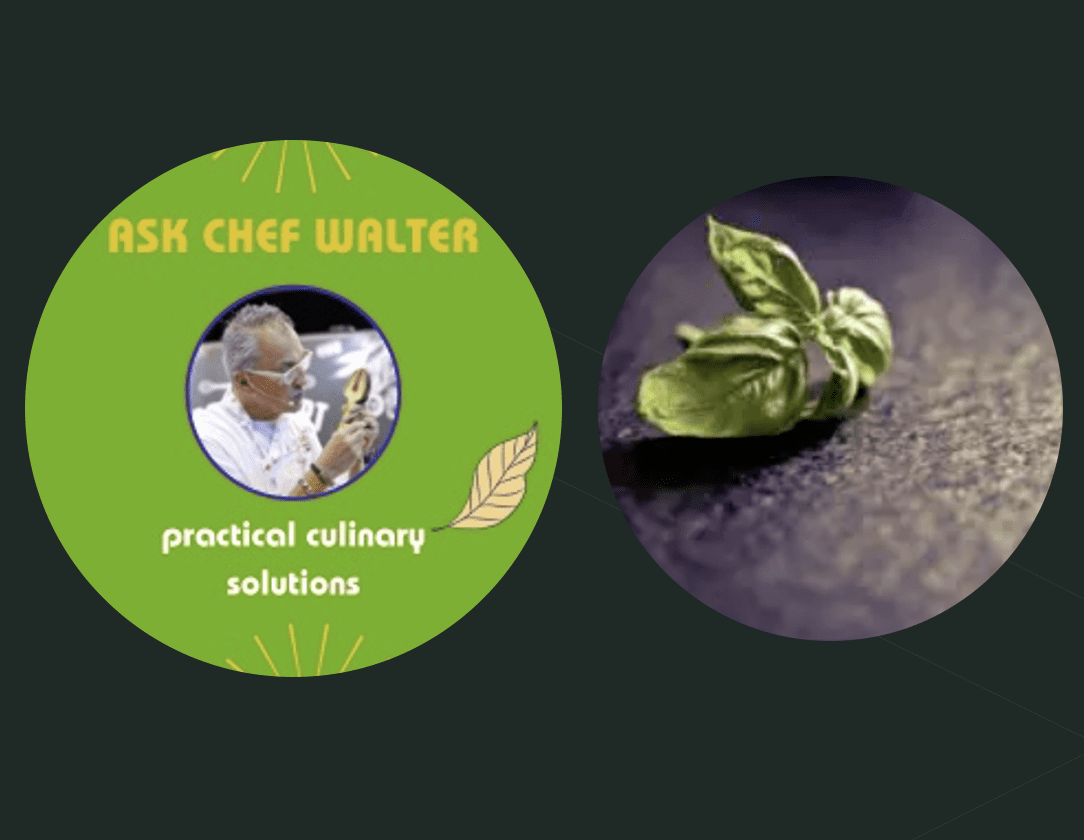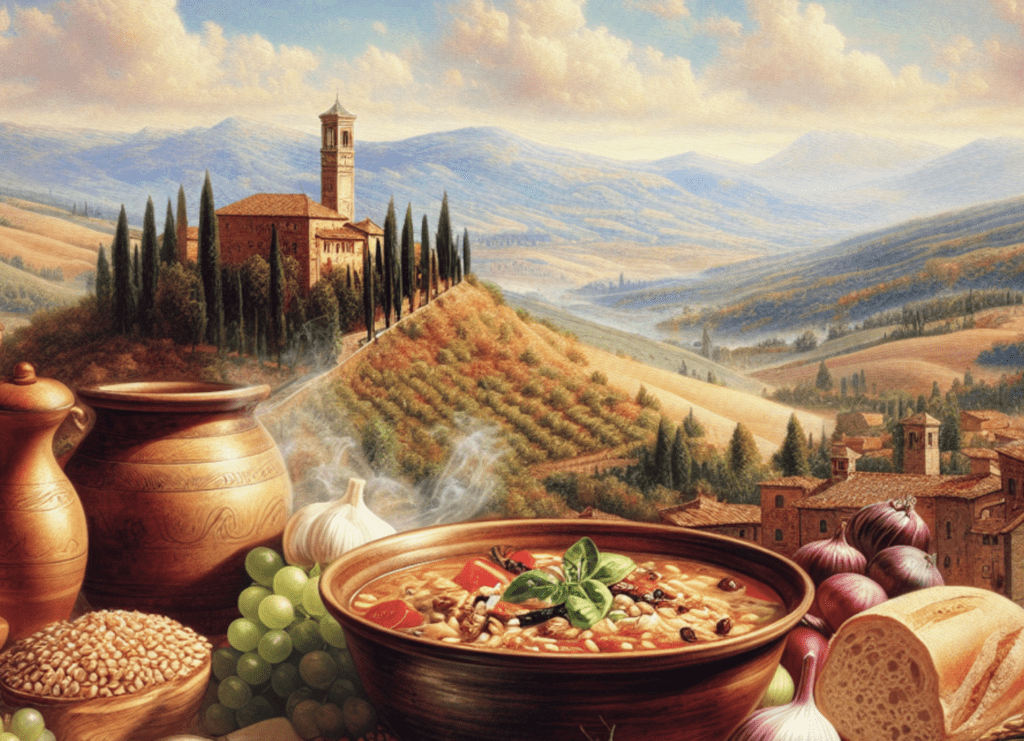Search Posts
Recent Posts
- Rhode Island Weather for June 4, 2025 – Jack Donnelly June 4, 2025
- Sour Grapes time! – Tim Jones (meet Tim at AnimeCon) June 4, 2025
- Lawsuit filed to stop Empire Wind Project by 4 environmental groups and fishermen June 4, 2025
- It is what it is: 6.4.25 – Jen Brien June 4, 2025
- New ALS treatment by PathMaker Neurosystems. Co. funded by RI Life Sciences Hub to come to RI. June 3, 2025
Categories
Subscribe!
Thanks for subscribing! Please check your email for further instructions.

Ask Chef Walter – Cooking lesson about Zuppa di Farro – Walter Potenza
by Chef Walter Potenza, contributing writer
Good morning, friends:
Today’s cooking lesson is about the zuppa di farro from Tuscany.
Follow us in our kitchens!
The storied history of Grano Farro dates back to ancient times when it served as the foundational grain that sustained Mediterranean and Near Eastern populations for millennia. It also held a place of prominence as the standard ration for the mighty Roman Legions that marched across the Western World. Transforming into a paste and becoming a key ingredient in “plus,” the polenta consumed by the impoverished in ancient Rome, farro played a crucial role in the culinary landscape. However, despite its significance, the cultivation of farro faced challenges due to its labor-intensive nature and low yields in the post-Roman Empire era.
As the centuries unfolded, higher-yielding grains took center stage, causing the cultivation of farro to dwindle. By the turn of the 20th century, only a few hundred acres of farro fields remained scattered across regions such as Lazio, Umbria, the Marches, and Tuscany in Italy. Farro might have remained a local specialty if not for the farmers of the French Haute Savoie, who introduced it to upscale restaurants, igniting a renewed interest among gastronomes. This success sparked a resurgence of farro’s popularity in Italy, particularly among health-conscious cooks and those with a penchant for culinary trends.
It’s often likened to spelled for those unfamiliar with farro, but distinctions exist. Luciano Migliolli, the author of “Il Farro e le sue Ricette” (Farro and its Recipes), notes that farro requires soaking, while spelled can be boiled directly. Cooked farro boasts a firm, chewy texture, unlike the softer, mushier spelling consistency. Therefore, careful attention to packaging is essential when purchasing farro, ensuring it is Triticum dicoccum, the specific variety of farro. In the absence of farro, spells can be a substitute, though adjustments to cooking times are necessary. Barley or other whole grains may also yield slightly different results.
Italy’s Food + Wine Tours 2024

Farro Soup Recipe (Zuppa di Farro):
This hearty soup, a beloved dish throughout Tuscany, hails from the Garfagnana region in the northwest mountains of Lucca.
Ingredients for 4
6-8 ounces (by weight) of farro in whole grains
3/4 pound ripe plum tomatoes (seeds removed) or coarsely chopped canned San Marzano tomatoes, preferred in colder months when fresh tomatoes are unavailable locally.
2-3 ounces pancetta (preferably smoked)
Grated Pecorino Toscano cheese (Pienza) or Parmigiano (avoiding overly sharp varieties like Romano)
Two cloves garlic
One onion, finely sliced
A small bunch of fresh parsley
Fresh basil to preference
A few sprigs of thyme
Extra Virgin olive oil
Salt and pepper to taste
1-quart fresh hot vegetable broth (can be made with bouillon if needed)
Directions:
Begin by preparing the farro: Wash it thoroughly, removing impurities such as chaff, pebbles, or defective grains, and soak it for at least 8 hours.
After you are ready, finely chop the pancetta and sauté it in two tablespoons of olive oil, thyme, sliced onion, and garlic cloves. Once the mixture browns, discard the garlic and add finely chopped tomatoes, parsley, and basil. Let it cook for a few minutes, then pour in the hot broth. Once it starts boiling, add the farro to the pot.
Cook over a low flame for approximately 2 hours or until the farro is done (test a grain), stirring regularly and adjusting the seasoning towards the end.
Let the soup sit for an hour, then serve it warm, garnished with olive oil and grated cheese. Enjoy the hearty flavors of this ancient grain resurfaced in a modern culinary masterpiece.
(Editorial Board Flavors + Knowledge, SimVal Media Group, USA).
___

Meet Chef Walter!
There is a constant, recognizable thread in the career of Walter Potenza to elevate the level of Italian culinary culture in the United States. Besides his unquestionable culinary talent and winning business perspective, Chef Walter has been a relentless educator with passion and knowledge who defeats stereotypes. His life, career, and values are a model, an example to follow by any chef of Italian gastronomy working outside Italy.
Chef Walter appears regularly on National and International Networks such as Food Network, ABC, CBS, NBC, RAI, FOX, and Publications such as NY. Times, Washington Post, Wall Street Journal, Food & Wine, Saveur, Gourmet, and several Italian media outlets. And now – RINewsToday!
Travel with Chef Walter!

Chef Walters Cooking School, Cranston, Rhode Island. (Book a class, or purchase a certificate)
